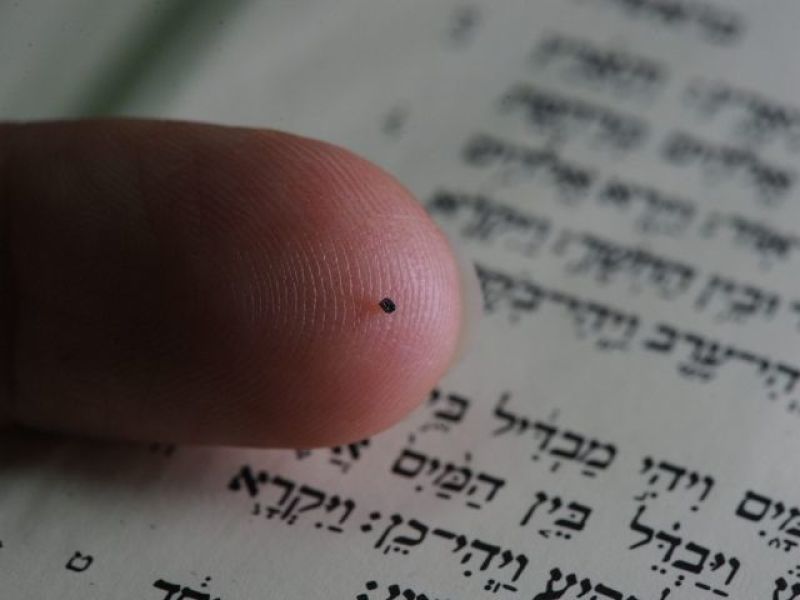
As a member of the Ax-1 crew, Israeli astronaut Eytan Stibbe would be taking the 'Nano Bible' with him to outer space as a part of the Rakia mission at the beginning of April.
Technion confirmed its journey to the International Space Station with Stibbe. Technion - Israel Institute of Technology developed the copy of the "Nano Bible" Stibbe would be bringing on the mission. The Israel Museum in Jerusalem, where it is currently exhibited, lent him the 'unique technological item'.
"The Nano Bible that I'll take to the International Space Station symbolizes harmony between groundbreaking technology and respect for our heritage as humanity. Creating a copy of this ancient text, using innovative technology, allows us to look into the future with hope while remembering our past. I'm looking forward to the opportunity to look at this technological marvel as I float in space," Stibbe said.
Technion engineers made the prime copy of the Nano Bible in celebration of the Jubilee in Israel Museum held in Jerusalem year 2015. According to Technion, it was presented in the Hall of Books wherein Dead Sea Scrolls and the renowned Aram Tzova Crown from the 10th century were displayed also.
"The exhibition first presented the 21st Century Nano Bible against the backdrop of the Dead Sea Scrolls," Technion said.
Also, there were additional copies prepared and awarded to Pope Benedict XVI and the Dibner Library in the National Museum of American History in Washington D.C.
Professor Uri Sivan, the creator of the first Nano Bible and the president of the Technion, cited the importance of the Bible for the Jewish people and the whole world, All Israel News reported. "The Nano Bible and its journey into space link the distance and time between the past and the future, between ancient human culture and the technological frontier," he said.
According to Technion, the Nano Bible is the "most innovative and smallest copy of the Bible in existence." Technion scientists developed the 1.2 million-letter inscription of the Bible to the gold-plated layer of silicone using a focused ion beam. Microscopes with 10,000 times magnification can solely make the ancient text visible to the naked eye.
"While creating the Nano Bible, Technion researchers sought to demonstrate the wonders of miniaturization and how this ultimate modern-day miniaturization can be used," Technion added.
Prof. Sivan and Dr. Ohad Zohar of the Russell Berrie Nanotechnology Institute thought of the idea of miniaturizing the Bible in 2007. Sivan and Zohar designed the technology as part of an educational program aimed to increase young people's interests in nanoscience and nanotechnology.
"The production of the chip and development of the software that allows the engraving to be carried out was developed by engineers in the Zisapel Nanoelectronics Center (MNFU) at the Technion."
Stibbe would not just be bringing the "Nano Bible" alone, Rakia Mission announced "The Big Dream Project" in which a collective video art of 50,000 dreams across the world will be featured and launched together with him on his journey to the International Space Station.
"The artwork comes with an interactive map, enabling viewers to view the dreams in real-time, so that the moment the Space Station will be above India, for instance, the India dreams will be illuminated," he said.
According to him, the project would remind people how a dream is essential to planning and execution. "Without a dream, there is no accomplishment," he added.



















